Combine classical sculpture and a universal symbol of the heavenly angel to add meaning to the landscape as well as a focal point. This beautiful cast concrete piece is set upon a very tall pedestal so it stands well above the foreground planting. This extended base is a valuable tool when the art work is to be set within a planting bed. It's light grey coloring requires a high contrast background to look its best here against a cantaloupe colored walls and red-orange trumpet vines pruned to spread across the top for increased privacy.
Artistic versions of favorite pets, these whimsical cats are placed beside the lily pond where they're intently watching the koi. This is an example of an unusual way to integrate three separate sculptures together into a composition that makes sense. Their rounded forms and small ears give them an almost geometric presence that is at once natural and fun. Never forget that sculpture in the garden need not be so serious, and is a great way to poke fun at the often snobby world of modern art.
These giant horsetail reeds are the work of an amateur German ceramic artist. This presentation in his personal garden explores the segmented nature of this ancient plant and its peculiar cone-like sporangiums at the top. Soft aqua coloring with bold strips and tactile spore cases blend into the planting, but retain their powerful presence, particularly in the lean seasons such as early spring before the garden blooms.
Lighting in the ancient Japanese tea garden was provided by carved stone lanterns into which oil lamps or candles were placed to guide visitors to the tea house. For centuries Japanese designers have created many different sizes and shapes for lanterns that have evolved from a necessary feature to a purely aesthetic one. A symmetrical pair of long legs raise this lantern well above the surrounding planting, which makes it a much stronger sculptural element. Whether it's a traditional Japanese garden or a contemporary one, a bit of Asian flare outdoors links the garden back to interior decor in the same style.
Antique Chinese sculpture or reproductions make ideal focal points for tropical inspired gardens where the Asian feel is subtle and Japanese design doesn't quite fit. Setting this light valued empress amidst a background of deep green palms and bamboo provides a subtle, yet compelling element. It is particularly useful in spatially challenged urban yards or condominium patios where the details of such a fine piece can be enjoyed a close range. Whether truly old or just made to look that way, consider this an excellent choice for courtyards and atriums too.
The beauty of this simple, large leaf inspired garden artists Little and Lewis to create the foliage of Gunnera in ceramic. The artists consider these movable sculptures that can be used in a different way every season, or left alone. The broad form and coloring fits particularly well into shade gardens where the large leaf provides optimal contrast against fine textured plants and flowers.
This life sized Native American sculpture depicts the shaman and his familiar, the crow. It is one of the best examples of figures for Southwestern style gardens, or those that are rustic in a forested setting. The fine patina and subtle coloring give it great beauty in the fading illumination of the setting sun, which is the benefit of sighting it with respect to morning and evening light. Few Native American theme works are as dignified as this one which demonstrates a natural link of gardens to the human spirit.
This antique was discovered in a hotel basement and it first saw the light as an on deck sculpture for this Spanish style patio. The old carved wood of the padre blends well with the doors and window material, and yet is dark enough to contrast with the orange wall. This illustrates a valuable solution for materials like carved wood that can be damaged by persistent moisture in planting areas. When a sculpture is designed into the layout of a patio, it won't look like an afterthought. Its light weight material is easy to bring indoors for protection during inclement weather or seasons.
Discovered in a Dutch garden, this old piece of carved stone was salvaged from demolished buildings. It demonstrates how a sculpture becomes a relic in the right setting. Designers set it into the slope down to a still pool, so that it appears as a remnant of ancient times, or an artifact gradually uncovered by erosion. While fully exposed in early spring, parts of it become nested in ferns and flowering perennials that provide the ideal setting for a surprise discovery by visitors.
Washington State garden artists Little and Lewis entitled this The Sphere, but it is fondly known as dinosaur egg. Perched perfectly upon a post and block, the dark interior gives this option far more depth and interest than a solid sphere. Set against a fine textured background of ornamental grasses, it is placed so that those strolling the garden come upon it from an angle that controls the desired effect. These elements are popular among modern designers with a naturalistic flair, for they can just as easily invoke the feeling of an enchanted forest or as a simple geometric form in the abstract modern landscape.
A bust of William Shakespeare is the focal point for a garden filled with plants mentioned in his plays and sonnets. It demonstrates how easily sculpture can be lost in larger gardens if it is out of scale. The carved stone bust atop its classical pedestal is provided greater visibility and increased mass by climbing roses are trained into an arch that frames the piece. For academics or lovers of literature and theater, this bust is more than carved stone. It becomes a shrine.
In the Spartan spaces of desert gardens, large steel sculptures prove the most resistant to heat and wind. The use of two big horn sheep in different attitudes adds a dynamic that's difficult to achieve with just one figurative piece. Set in a field of golden gravel, the dark rusted surface is a high contrast stand-out that solves the problem of a large driveway and garage door that doesn't offer much interest to arriving visitors. After dark, creative lighting gives these two sculptures even more drama.
When sculptures have a strong spiritual origin, their presence in the landscape is more than mere art. They become symbols of peace and tranquility that provide daily inspiration. Such pieces need not be large and imposing, and may prove the perfect solution for an unusual nook where the background and planting contribute to a visually powerful composition.
Modern corten steel sculptures with their minimal forms and patina of rust present universal appeal. Affordable and adaptable, graphic forms provide a subtle focal point that exploits negative space and a see-through transparency. Steel sculptures can appear far different in a plant based setting such as this than they do in one more Spartan and modern. Nesting any kind of sculpture into a carefully designed group of plants can make the whole vastly better than the sum of its parts.
|
Contributing Author: Maureen Gilmer, contributing writer for Landscaping Network, author and syndicated columnist |
Liked this article? Get more great landscaping ideas from LandscapingNetwork.com through these avenues:



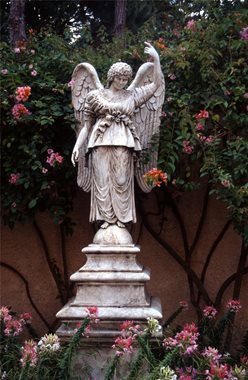
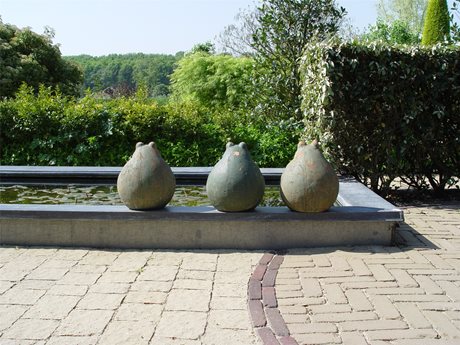
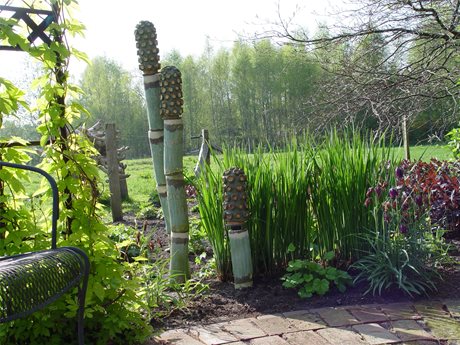
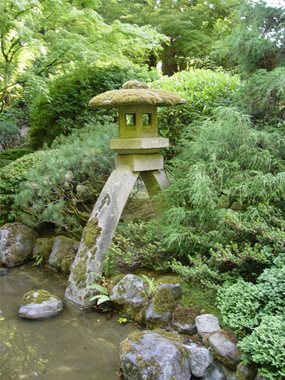
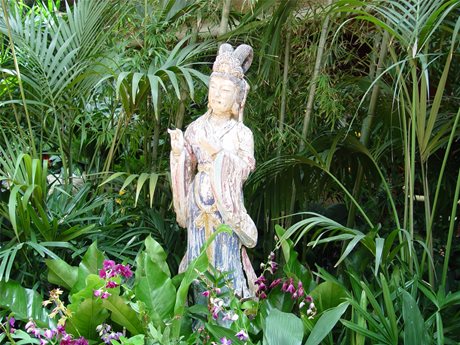
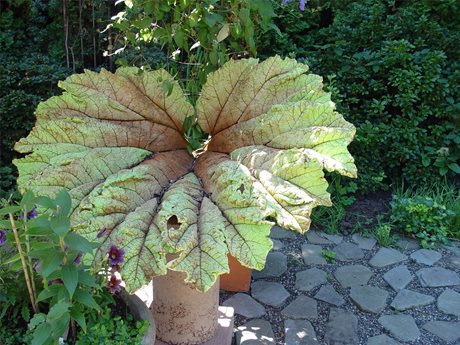
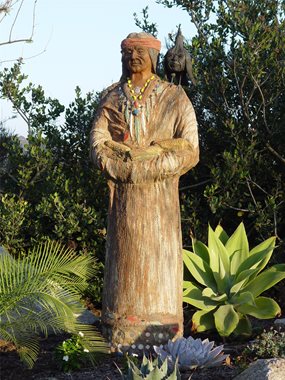
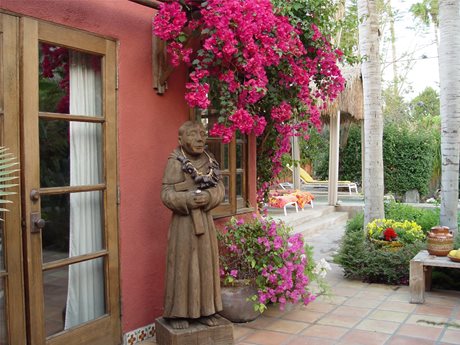
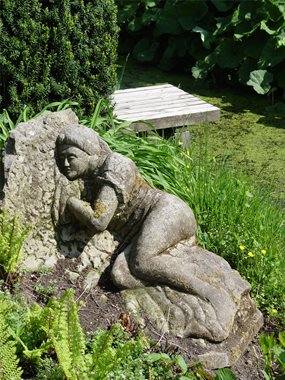
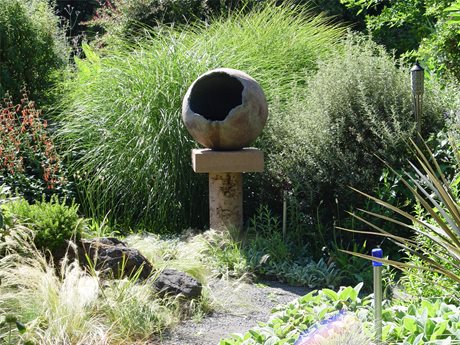
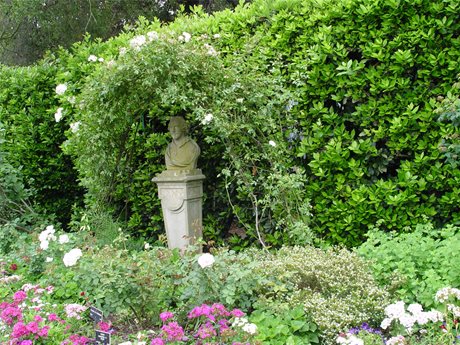
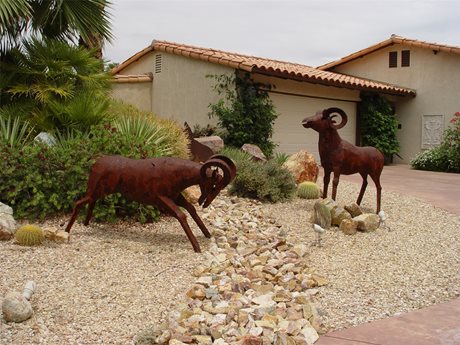
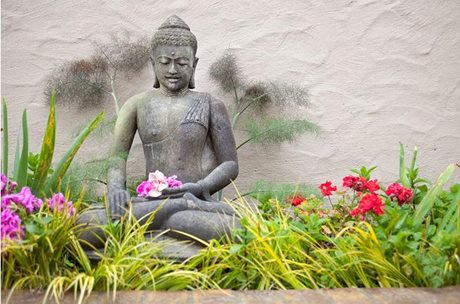
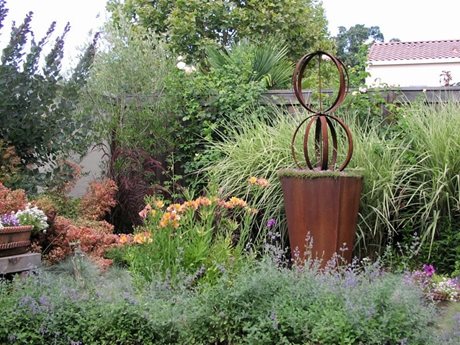
 Gardening Ideas
Gardening Ideas Garden Sculpture Pictures
Garden Sculpture Pictures English Garden Design
English Garden Design

